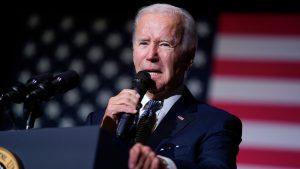The issue of student loan debt has been a significant concern for many individuals seeking higher education in the United States. President Joe Biden has introduced a series of policies aimed at addressing the challenges posed by student loans. In this article, we delve into the key aspects of Biden student loans policies, their implications, and their potential impact on borrowers.
Introduction to Biden’s Student Loan Policies
President Biden’s student loan policies are rooted in the recognition of the burden that student loan debt places on individuals and the broader economy. With the goal of providing relief and promoting access to higher education, these policies encompass various initiatives, from loan forgiveness to repayment reforms.
One of the central pillars of Biden’s approach is the emphasis on making college education more affordable and accessible. This includes not only addressing existing student loan debt but also implementing measures to prevent future borrowers from facing the same financial challenges.
Key Components of Biden’s Student Loan Policies
1. Student Loan Forgiveness Programs: President Biden has proposed several student loan forgiveness programs to alleviate the burden of debt for specific groups of borrowers. One notable initiative is the Public Service Loan Forgiveness (PSLF) program, which aims to provide loan forgiveness to individuals working in qualifying public service jobs after making 120 qualifying monthly payments. Additionally, Biden has proposed expanding the income-driven repayment plans, which would cap monthly payments at a percentage of borrowers’ discretionary income.
2. Tuition-Free Community College and Higher Education Funding: Another cornerstone of Biden’s approach is the promotion of tuition-free community college education. This initiative seeks to provide two years of tuition-free community college for eligible students, with the aim of increasing access to higher education and reducing the financial burden on families. Furthermore, the Biden administration has proposed increasing funding for historically Black colleges and universities (HBCUs) and minority-serving institutions to enhance educational opportunities for underserved communities.
3. Borrower Protections and Loan Repayment Reforms: Biden’s policies include measures to enhance borrower protections and simplify the loan repayment process. This involves streamlining income-driven repayment plans, allowing borrowers to enroll automatically, and adjusting the terms to ensure that payments are manageable based on individual income levels. Additionally, the administration has proposed changes to bankruptcy laws to make it easier for borrowers to discharge student loan debt in cases of financial hardship.
Implications and Potential Impact
1. Relief for Borrowers: The primary goal of Biden’s student loan policies is to provide immediate relief for borrowers burdened by student loan debt. By expanding loan forgiveness programs and introducing repayment reforms, the policies aim to alleviate the financial strain on individuals and enable them to pursue other life goals, such as homeownership and starting a family.
2. Education Accessibility and Workforce Development: The emphasis on tuition-free community college and increased funding for higher education institutions reflects Biden’s commitment to expanding educational opportunities and promoting workforce development. These initiatives could lead to a more educated and skilled workforce, which is essential for economic growth and innovation.
3. Long-Term Economic Impact: Biden’s student loan policies could have far-reaching economic implications. By reducing the burden of student loan debt, individuals may have more disposable income to contribute to the economy through spending and investment. Additionally, the policies may encourage more individuals to pursue higher education, leading to a more skilled and competitive workforce.
Conclusion: A Path to Educational and Financial Empowerment
In conclusion, President Biden’s student loan policies represent a comprehensive effort to address the challenges posed by student loan debt and promote greater access to higher education. Through a combination of loan forgiveness programs, tuition-free community college initiatives, and borrower protections, these policies aim to provide relief, enhance educational opportunities, and stimulate long-term economic growth.
As these policies continue to be implemented and refined, their impact on borrowers and the broader economy will become clearer. Ultimately, the state of student loans in the United States is poised for transformation, with the potential to create a more educated, financially empowered, and economically resilient population.






